ISO 9001 Certification in YANBU
Get Free Consultation
PopularCert provides professional ISO 9001 certification services in Yanbu, assisting businesses in establishing effective Quality Management Systems (QMS) compliant with international standards. ISO 9001 certification in Yanbu helps organizations consistently deliver quality products and services while improving customer satisfaction and operational efficiency. We support clients throughout Yanbu Industrial City and surrounding areas with comprehensive guidance on documentation, gap analysis, and audit preparation. Alongside ISO 9001, PopularCert also offers expertise in related standards such as ISO 14001 (Environmental Management) and ISO 45001 (Occupational Health & Safety) to ensure holistic organizational improvement.
What is ISO 9001 Certification in Yanbu?
ISO 9001 Certification in Yanbu is a global standard for quality management systems that helps businesses streamline processes and improve customer satisfaction. It ensures organizations consistently meet customer and regulatory requirements. In Yanbu’s diverse industrial sectors, this certification enhances credibility, operational efficiency, and opens opportunities for growth in both domestic and international markets.
Why ISO 9001 Certification is Important for Businesses in Yanbu?
- ISO 9001 Certification is very important for businesses in Yanbu because it helps them maintain high standards of quality in their products and services. This internationally recognized certification helps companies streamline their processes, reduce errors, and increase customer satisfaction. For businesses in Yanbu’s growing industrial and commercial sectors, it acts as a trusted mark of reliability and professionalism.
- Moreover, ISO 9001 opens up new opportunities by helping Yanbu companies comply with regulatory requirements and meet the expectations of both local and global clients. Achieving this certification not only enhances a company’s reputation but also drives continuous improvement, making it easier to compete in today’s dynamic marketplace and foster long-term success.
How to Get ISO 9001 Certification In Yanbu?
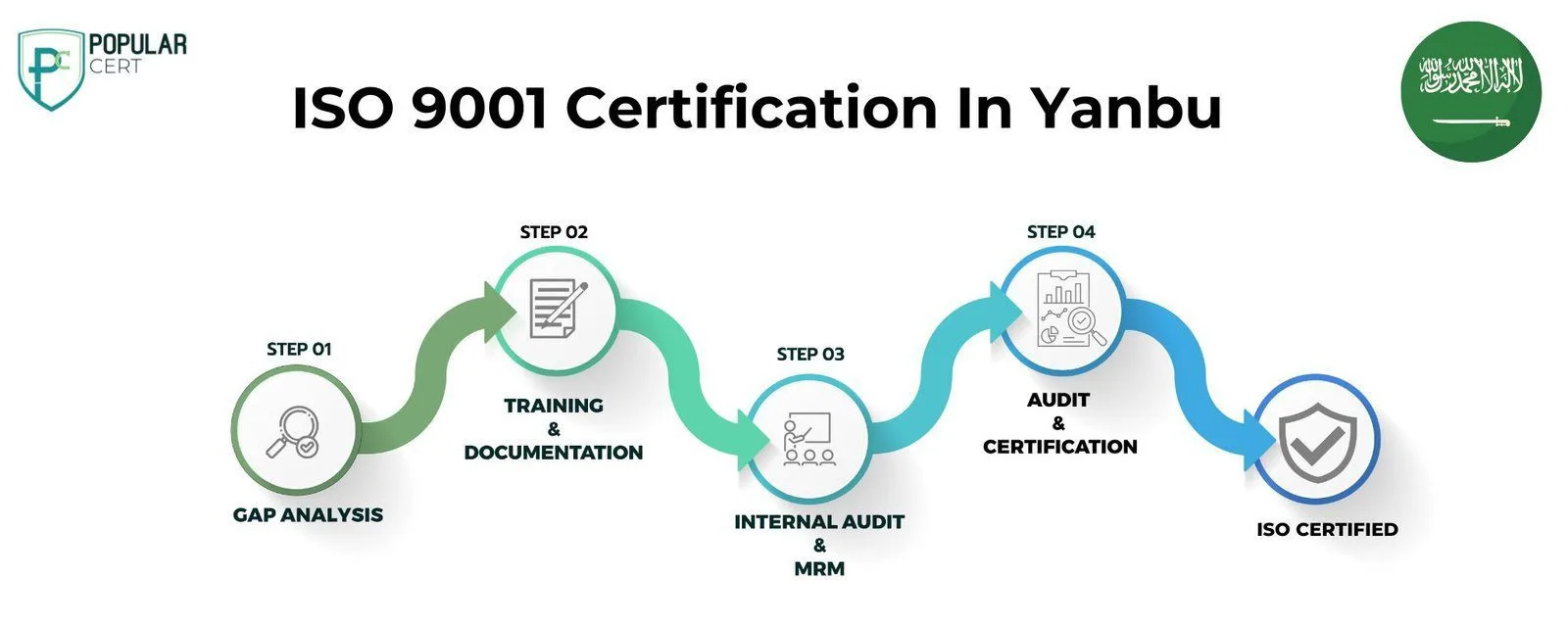
Process to Get ISO 9001 Certification In Yanbu
Consultation and Gap Analysis
Assess existing quality management practices, identifying deficiencies and providing tailored guidance to align processes with ISO 9001 requirements for certification readiness.
Planning, Documentation, and Policy Development
Establish a structured quality management framework, defining processes, objectives, and policies to ensure compliance and continuous improvement.
Training and Awareness
Ensure employees understand quality management principles, their roles, and responsibilities, fostering a culture of compliance and continuous improvement organization-wide.
Internal Audit and Management Review
Evaluate ISO compliance, identify improvement areas, and ensure alignment with objectives, fostering accountability and continuous enhancement of management systems.
External Certification Audit and Certification
The external certification audit verifies ISO compliance through an accredited body, leading to certification that validates the organization's adherence to international standards and best practices.
Benefits of ISO 9001 certification in Yanbu.
- Enhanced Customer Satisfaction: Ensures consistent delivery of quality products and services, boosting customer trust and loyalty.
- Improved Efficiency: Streamlines processes and reduces waste, leading to cost savings and better resource management.
- Market Access: Facilitates entry into international markets by meeting global quality standards, increasing opportunities for growth.
- Regulatory Compliance: Demonstrates adherence to legal and industry-specific requirements, minimizing risks of non-compliance.
- Reputation and Credibility: Establishes your organization as a trusted provider of high-quality products or services, enhancing brand reputation.
- Continuous Improvement: Promotes a culture of ongoing evaluation and enhancement, driving long-term success and innovation.
Types Of ISO Certification In Yanbu
Get Free Consultation
Our Clients


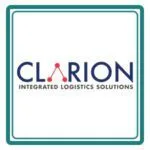



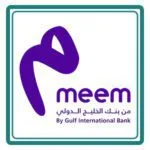




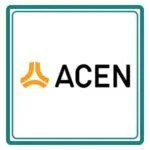
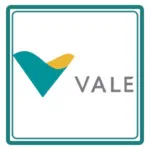





Which Industries in Yanbu Benefit from ISO 9001 Certification?
ISO 9001 certification is a valuable tool for businesses in Yanbu aiming to improve quality, efficiency, and customer trust. Here are the sectors where it makes a real difference:
- Petrochemical Plants: Helps maintain strict quality standards in complex operations.
- Marine and Port Services: Supports smooth logistics and consistent service delivery.
- Food and Beverage Manufacturing: Strengthens hygiene, quality control, and traceability.
- Construction and Engineering: Enhances project planning and reduces costly rework.
- Logistics and Warehousing: Improves inventory management and delivery accuracy.
- Water Treatment and Utilities: Promotes reliable service and consistent performance.
- Educational and Training Services: Ensures structured management and student satisfaction.
Businesses in Yanbu that adopt ISO 9001 stand out for their dedication to quality, process improvement, and global competitiveness, key factors in long-term success.
Cost of ISO 9001 Certification in Yanbu
The cost of ISO 9001 certification in Yanbu depends on your organization’s size, industry, and current quality management setup. Collaborating with the best ISO consultants in Yanbu helps streamline the process and ensures value for your investment. Whether you’re a startup or a growing enterprise, understanding the full scope of the ISO certification process in Yanbu is essential for budgeting correctly.
Key cost components include:
- Gap analysis and system evaluation
- QMS documentation and procedure development
- Staff training and internal audit support
- Final certification audit from an accredited body
- Ongoing compliance support if required
With tailored guidance, achieving ISO 9001 certification Yanbu becomes a strategic move toward quality improvement and market recognition.
Why Choose PopularCert for ISO 9001 Certification in Yanbu?
PopularCert delivers expert support for ISO 9001 certification in Yanbu, helping organizations improve their quality management systems with ease. We simplify the ISO certification process in Yanbu by offering structured guidance and personalized attention. With proven experience as trusted quality management consultants in Yanbu, we ensure efficient implementation and lasting compliance.
Our services offer:
- End-to-end ISO implementation support in Yanbu
- Affordable, tailored quality solutions
- Streamlined certification timelines
- Enhanced customer satisfaction and process control
- Continuous improvement strategies post-certification
Take the next step in quality management with PopularCert’s help in Yanbu.
GET A FREE CONSULTATION NOW
FAQ
What is ISO 9001 certification?
ISO 9001 certification is an international standard for Quality Management Systems (QMS) that helps businesses improve product and service quality, ensuring customer satisfaction and operational efficiency.
Why is ISO 9001 certification important for businesses in Yanbu?
ISO 9001 certification improves business processes, boosts customer trust, enhances market credibility, and opens new opportunities for contracts and partnerships in Yanbu’s competitive market.
How do I apply for ISO 9001 certification in Yanbu?
You can apply by partnering with expert consultants like PopularCert, who guide you through documentation, system implementation, and the audit process.
How long does it take to get ISO 9001 certified?
The timeline typically ranges between 3 to 6 months, depending on the readiness of your processes and organization size.
How much does ISO 9001 certification cost in Yanbu?
The cost depends on factors such as company size, complexity of operations, and the chosen certification body. PopularCert offers cost-effective consultancy services tailored to your needs.
